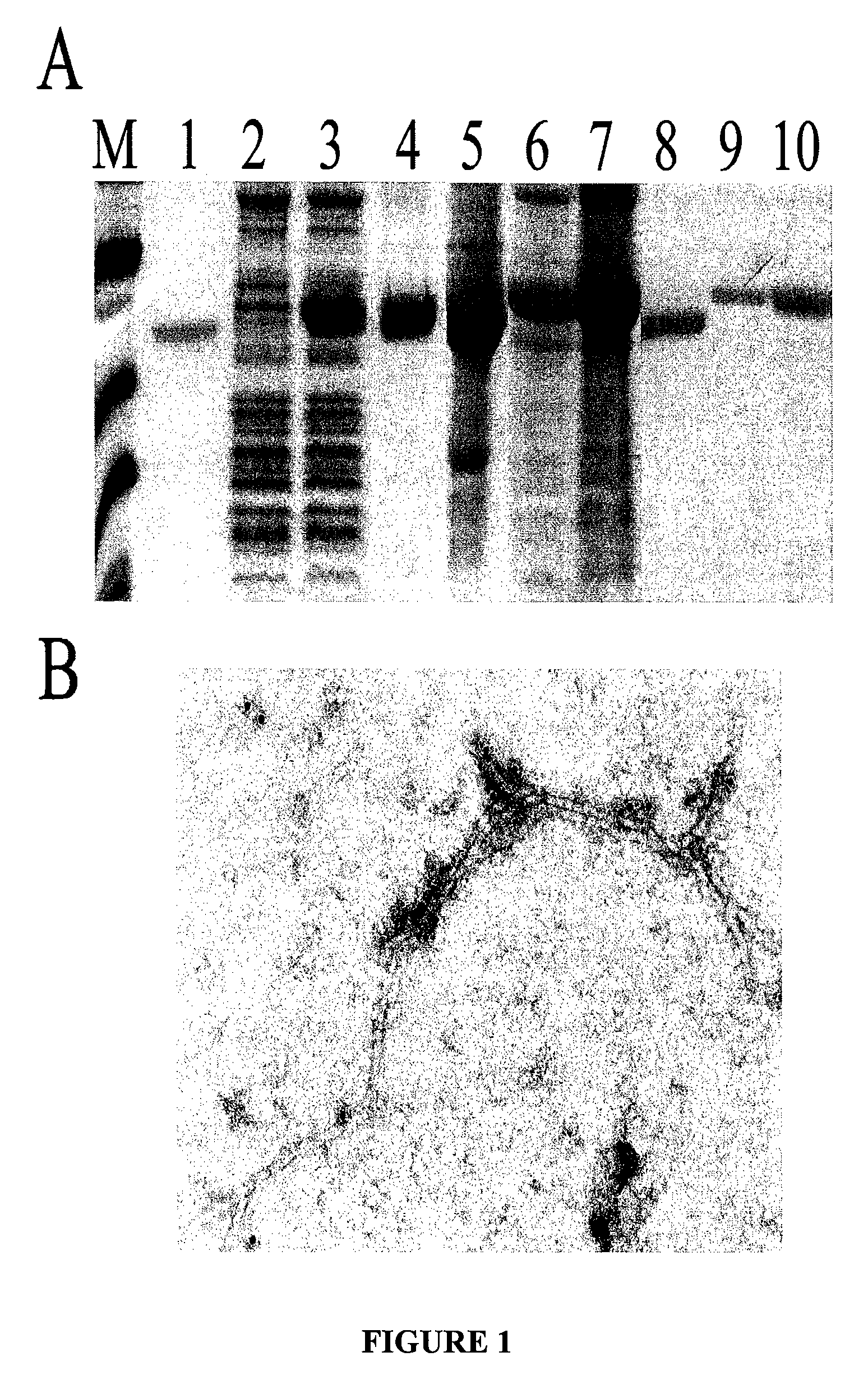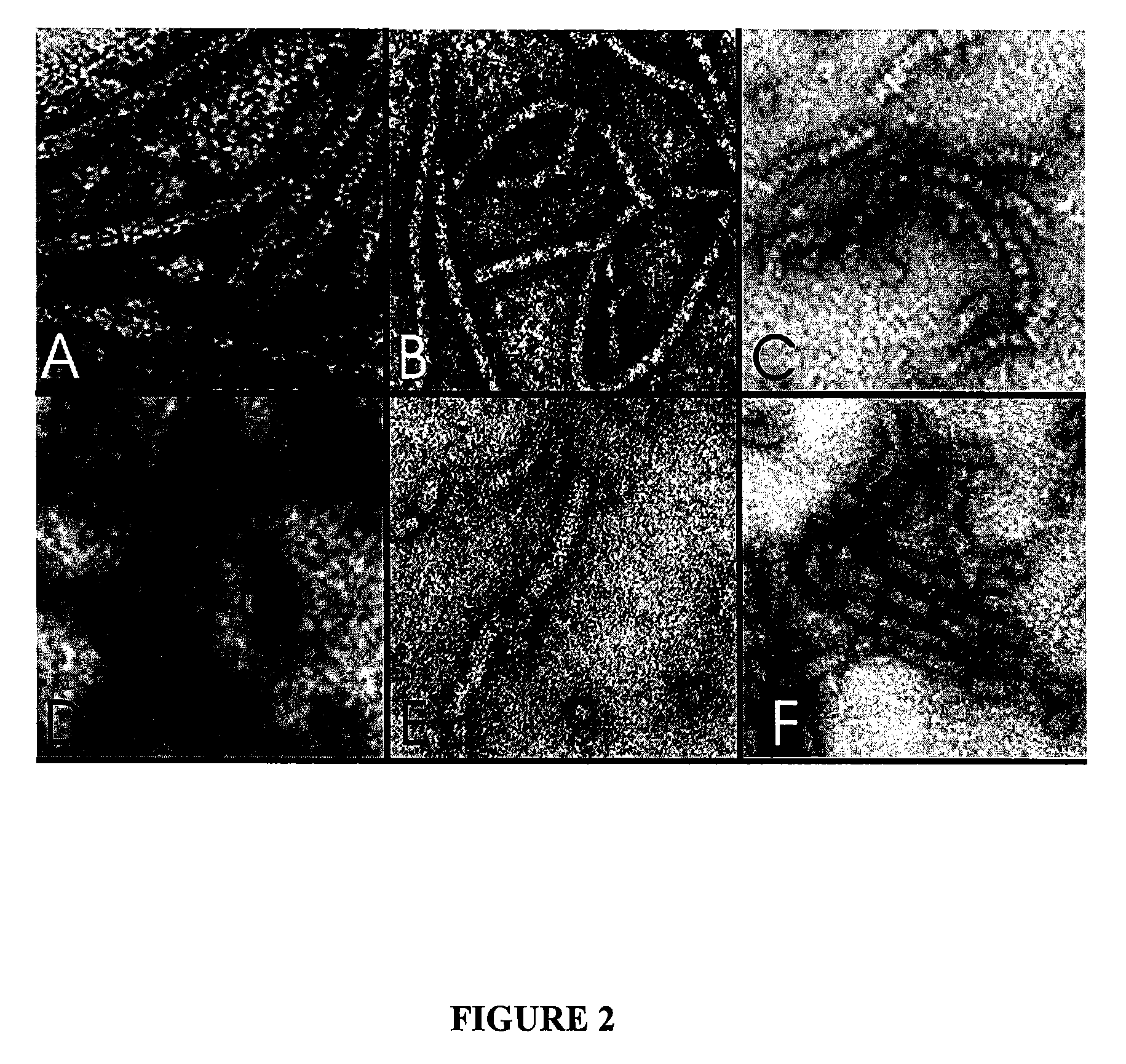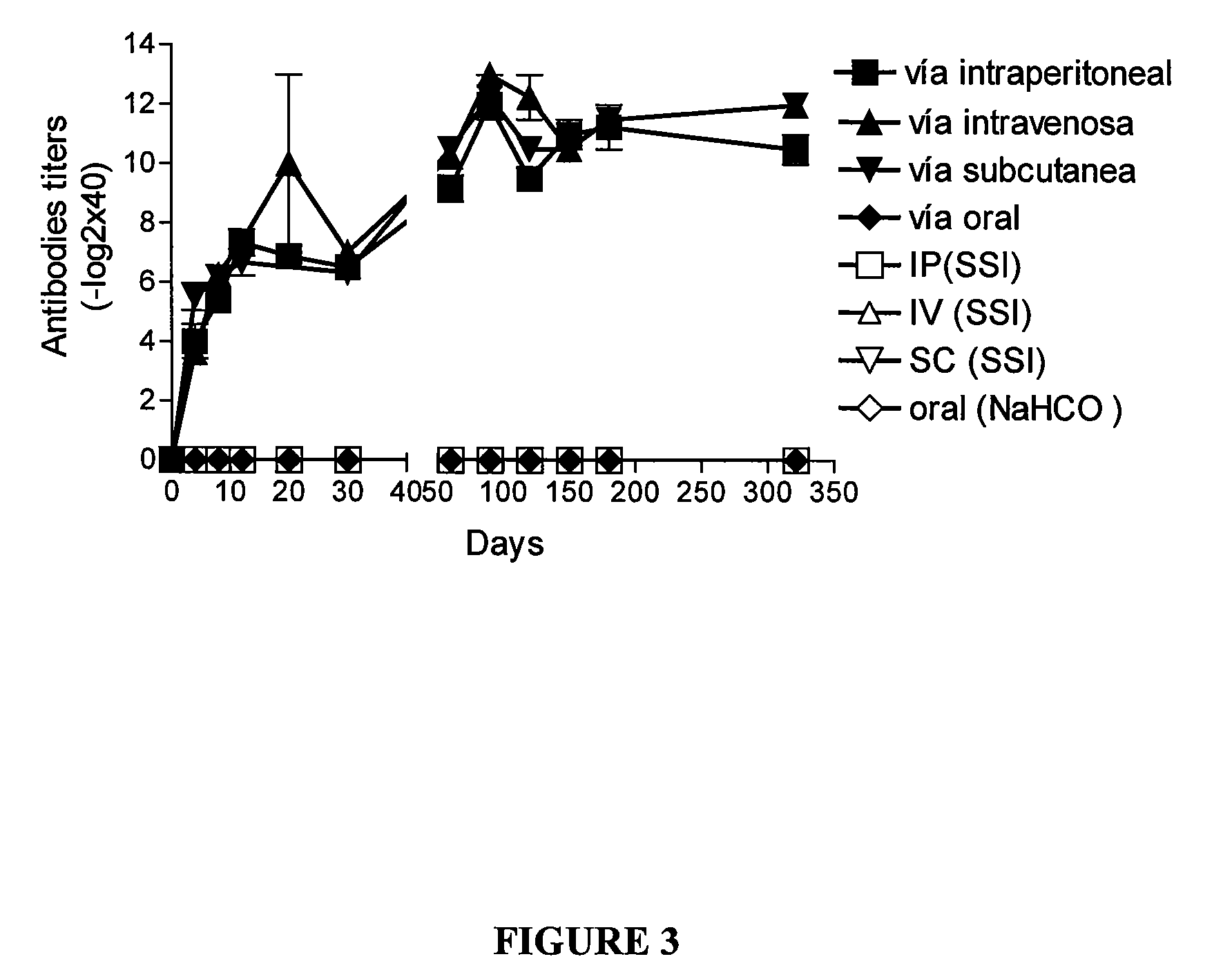Adjuvant viral particle
- Summary
- Abstract
- Description
- Claims
- Application Information
AI Technical Summary
Benefits of technology
Problems solved by technology
Method used
Image
Examples
example i
Preparation of Immunogen-Carrier VLP
[0136] PapMV has a rod-like structure that is made by assembly of the coat protein (CP) subunits. One virus particle contains 1200 subunits. A fusion of the selected peptides with the PapMV CP was made such that the peptide was exposed on the surface of the PapMV particles after in vitro assembly from a PapMV CP expressed and purified from an E.coli expression system. The assembly of the viral CP then ensured multimerisation of the peptide and has considerably improved avidity.
[0137] Coat protein (CP) gene was cloned and an in vitro assembly system developed using the coat protein (CP) of papaya mosaic virus (PapMV) (FIG. 1). The CP of PapMV was produced in E.coli in large amount (FIG. 1A) and produced in vitro PapMV virus-like particles that are very similar to the wt virus (FIG. 2A). It is shown for the first time that a recombinant PapMV CP can assemble in virus-like particles in vitro. Fusion of several peptides to the C-terminus of the CP ...
example ii
Immunopotentiation Effect of Immunogen-Carrier VLP
[0138] An adjuvant is often used in order to increase the immune response of a candidate vaccine. The enhancement of the inflammatory response favours the migration of more phagocytes to the injection site which, in turn results in an improved antigen presentation by antigen-presenting cells (APC). Alum, emulsions, microparticles and cytokines such as GM-CSF have all been used to increase the immune response of the candidate vaccine. The air pouch model was used to examine whether PapMV induced a proinflammatory event in vivo. In this model, sterile air is injected under the dorsum of mice at days 0 and 3. At day 7, proinflammatory agents can be injected into the air pouch and the inflammatory response measured. This model closely represents subcutaneous injection sites.
[0139] In this initial experiment, injection of PapMV into the murine air pouch resulted in the accumulation of approximately 8.5×106 leukocytes, compared to 0.8×1...
example iii
Hepatitis C Virus as Vaccination Target
[0147] It is known that 20% of infected HCV patients naturally clear the virus. This observation suggests that the immune system can eliminate the viruses if it reacts efficiently. It also suggests that chronically infected patients could be helped by boosting their immune system with a therapeutic vaccine against HCV, which could help to clear the viral infection by raising neutralizing antibodies to the virus.
[0148] The 2 epitopes chosen are found at the surface of the HCV virion. The E1 epitope (amino acid 285-303) and E2 epitope (amino acids 512-536), are shown to be strongly immunogenic in patients that have cleared the viral infection (David et al., 2001, J. Virol. 75:1229-1235). PapMV was engineered to harbour at its C-terminus the fusion of the E1 and E2 peptide of HCV which, can assemble in PapMV virus like particles in vitro (FIGS. 2D and E).
[0149] Three epitopes that are found at the surface of the HCV virion of E1 and E2 outside...
PUM
| Property | Measurement | Unit |
|---|---|---|
| Fraction | aaaaa | aaaaa |
| Fraction | aaaaa | aaaaa |
| Immunogenicity | aaaaa | aaaaa |
Abstract
Description
Claims
Application Information
 Login to View More
Login to View More - R&D
- Intellectual Property
- Life Sciences
- Materials
- Tech Scout
- Unparalleled Data Quality
- Higher Quality Content
- 60% Fewer Hallucinations
Browse by: Latest US Patents, China's latest patents, Technical Efficacy Thesaurus, Application Domain, Technology Topic, Popular Technical Reports.
© 2025 PatSnap. All rights reserved.Legal|Privacy policy|Modern Slavery Act Transparency Statement|Sitemap|About US| Contact US: help@patsnap.com



